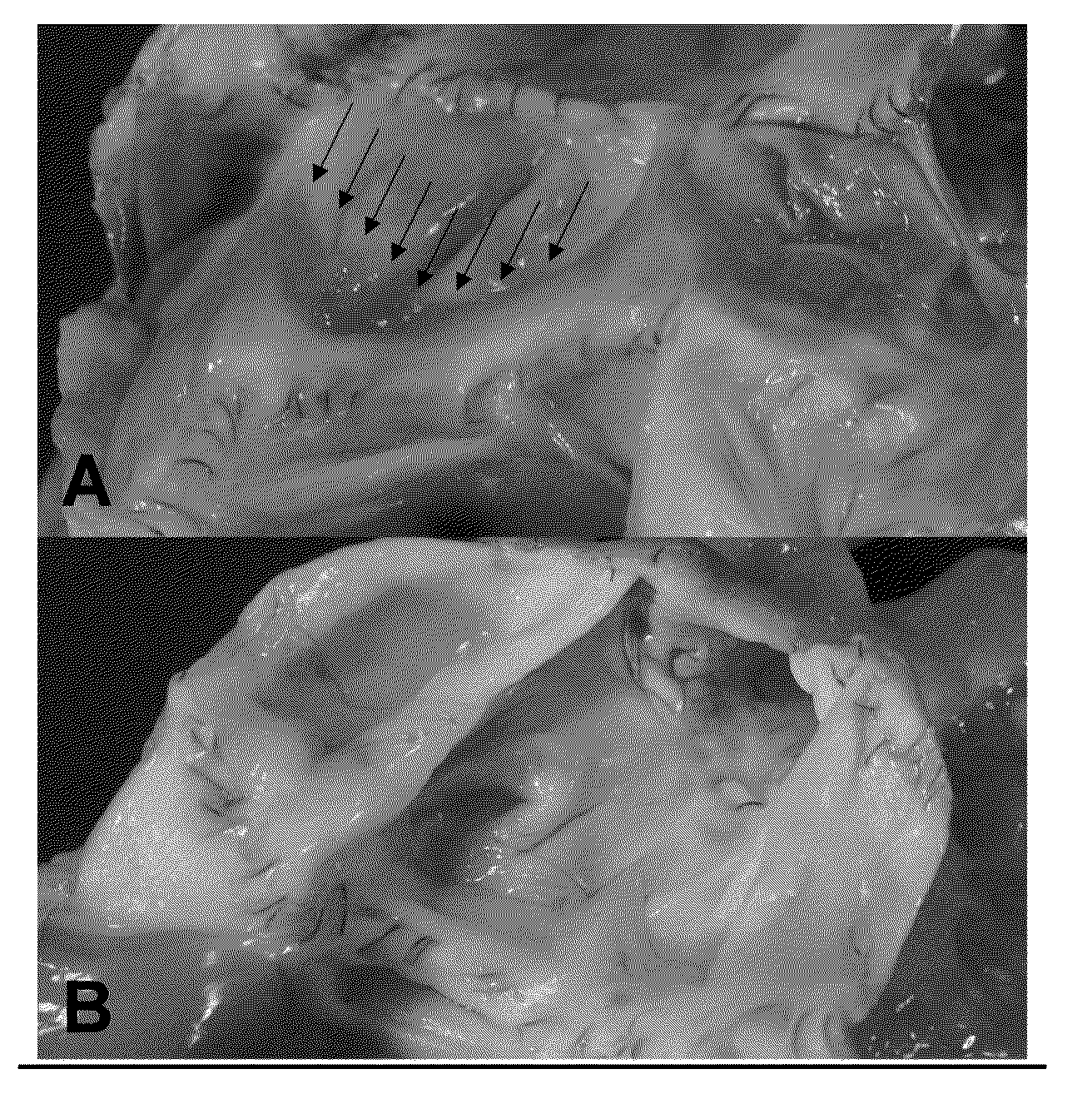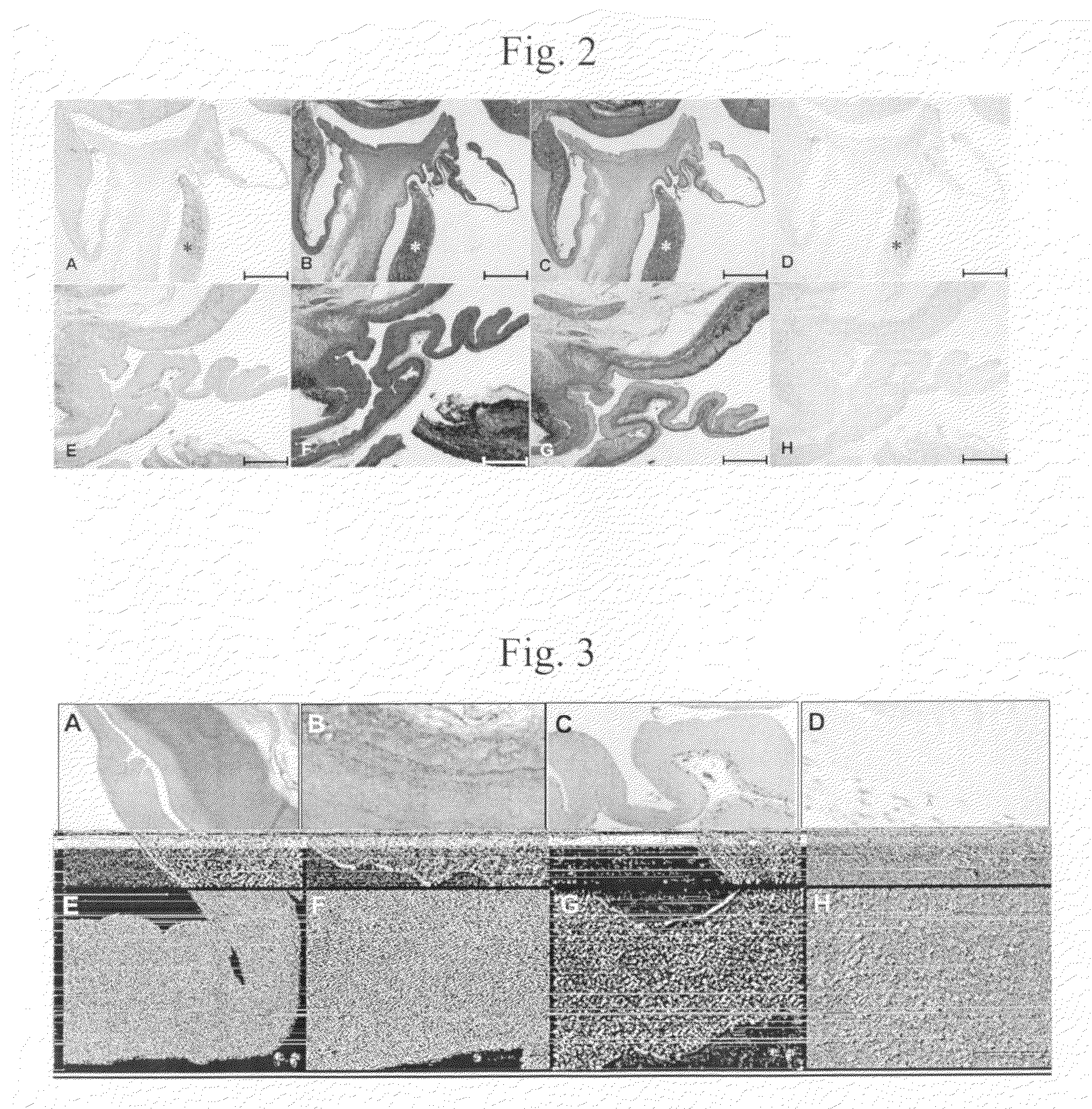Method for ice-free cryopreservation of tissue
- Summary
- Abstract
- Description
- Claims
- Application Information
AI Technical Summary
Benefits of technology
Problems solved by technology
Method used
Image
Examples
example 1
[0086]In the examples, groups of six pulmonary valves preserved with either FC or IFC were implanted in an orthotopic juvenile sheep model. See Stock. U. A., Nagashima, M., Khalil, P. N. et al., J Thorac Cardiovasc Surg 119:732-40 (2000), tissue engineered three leaflet heart valves. Sheep closely mimic human anatomy and physiology with similar annulus size, equivalent heart rate, cardiac output and little somatic growth. See Gallegos, R. P., Nockel, P I, Rivard, A. L., Bianco, R. W., J Heart Valve Disease 14:423-432 (2005), the current state of in-vivo pre-clinical animal models for heart valve evaluation.
[0087]Two different strains of sheep (crossbred Whiteface vs. Heidschnucke, a nordic short tailed breed) were chosen to guarantee a true allogeneic model.
[0088]Hearts of 15 adult, crossbred Whiteface sheep (9 ewes and 5 rams) were obtained from a slaughterhouse in Minnesota using aseptic conditions. The hearts were rinsed with lactated Ringer solution and placed ...
example 2
[0165]Porcine aortic artery segments were procured from a slaughter house. All tissues, both fresh controls and cryopreserved groups were treated with antibiotics at 4° C. Conventional frozen cryopreservation was realized using a 1° C. / min cooling rate and a culture medium based cryoprotectant formulation containing 1.4M dimethylsulfoxide and vapor-phase nitrogen storage according to standard protocols. Ice-free cryopreservation was realized by infiltrating the tissue with 12.6 M cryoprotectant solution containing dimethylsulfoxide, formamide and 1,2-propanediol in a single step. Bags containing the vessels were cooled for 10 min in a −120° C. methylbutane bath and stored at −80° C. After rewarming and washing to remove the cryoprotectants the following assays were performed:
[0166]1) Viability testing via measurement of resazurin (alamarBlue™) reduction;
[0167]2) Histology was assessed by H&E-staining and Movat-Pentachrome;
[0168]3) Collagen and elastin were visualized via two-photon ...
PUM
 Login to View More
Login to View More Abstract
Description
Claims
Application Information
 Login to View More
Login to View More - R&D
- Intellectual Property
- Life Sciences
- Materials
- Tech Scout
- Unparalleled Data Quality
- Higher Quality Content
- 60% Fewer Hallucinations
Browse by: Latest US Patents, China's latest patents, Technical Efficacy Thesaurus, Application Domain, Technology Topic, Popular Technical Reports.
© 2025 PatSnap. All rights reserved.Legal|Privacy policy|Modern Slavery Act Transparency Statement|Sitemap|About US| Contact US: help@patsnap.com



